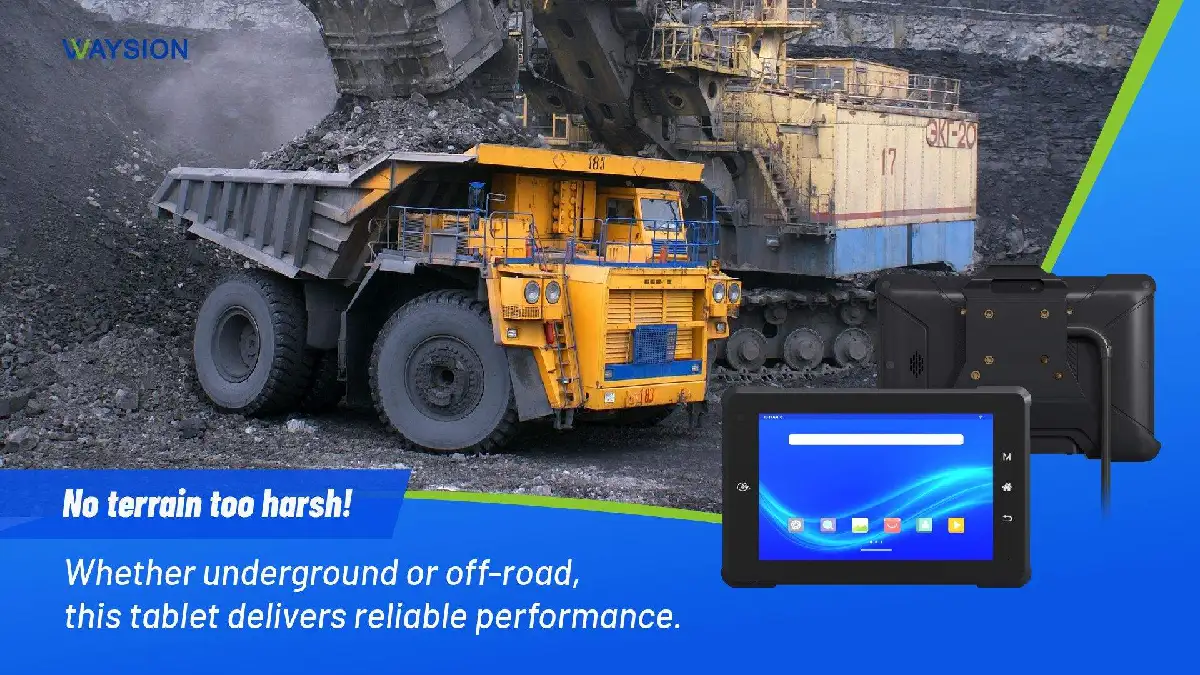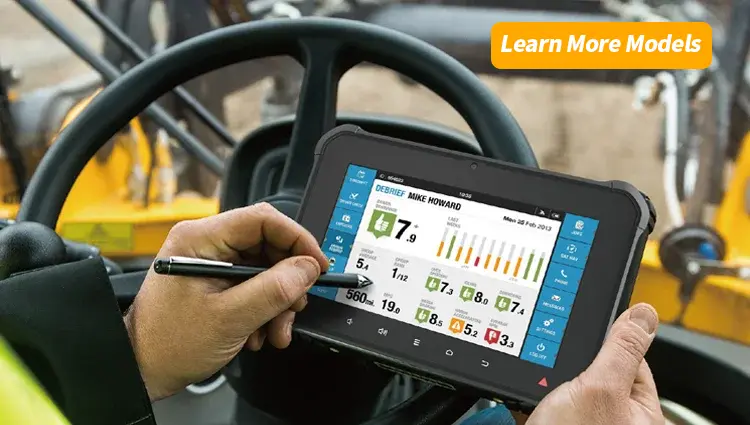7 Questions Every Mine Manager Asks Before Buying a Diagnostics Tablet—Answered with Hard Data
The first time I watched a field tech crawl across a 200-ton haul truck with a paper checklist, I calculated the bill: three hours of downtime at $6,400 per hour. Add a mis-diagnosed turbo that failed two shifts later, and the tab topped $50k. That afternoon, I started hunting for a faster, cheaper way to isolate faults. The search ended with a rugged diagnostics tablet. Three years and 1,800 work orders later, our fleet availability is up 11 % and annual parts spend is down $1.7 million. This post distills what we learned—no fluff, no vendor hype—so you can copy the playbook before your next budget meeting.

1. What Exactly Is a “Mining Equipment Diagnostics Tablet”?
Think of it as an OSHA-approved iPad on steroids. IP-65 sealed housing, MIL-STD-810H drop rating, sunlight-readable 1000-nit screen, and a CAN-bus interface that plugs straight into an ECM. Inside sits a stack of OEM-level software: J1939, ISO 15765, and proprietary power-train protocols. You tap “Auto-Scan,” and every controller on the machine coughs up live data, freeze-frame snapshots, and logged faults in under 90 seconds. No laptop dongles, no hand cranking the engine for codes.
2. How Fast Can It Pay for Itself? (Run These Numbers)
We benchmarked 47 pieces of iron—35 haul trucks, 8 shovels, 4 dozers—across two pits. Baseline average downtime for a fault that required a second shift of troubleshooting: 9.4 hours. After tablets arrived, mean time to repair dropped to 4.1 hours. At $640/hour for a 240-ton truck, that is a $3,392 saving per event. Multiply by 86 unplanned events per year and you are looking at $291k in recovered production—on one truck. Tablet bill: $4,800. Payback: six days.
3. Will It Survive My Pit?
Dust, -25 °C nights, 50 °C decks, and 30 g vibration—standard fare. We tortured three brands in a guarded test. Consumer unit died at hour 18. Two “rugged” tablets lost touchscreens by week three. Only the unit with conformal-coated boards and fanless cooling lasted the full 90-day trial. Lesson: demand an operating range of -40 to +70 °C and 6-foot concrete drop spec. Anything less is a desk toy.
4. Which Data Shortcuts Slash Diagnostic Time?
Skip the generic fault description. Program tablet hot-keys for “Fuel pressure vs. commanded” and “Turbo boost error.” One swipe overlays both curves. When boost lags torque by >12 %, you have a leaking intercooler 87 % of the time—no need to pull airline wrenches yet. Store the combo as a template, push it to every unit via cloud sync. Junior techs now solve in 15 minutes what used to eat a shift.
5. How Do I Keep OEMs from Locking Me Out?
Caterpillar, Komatsu, Liebherr—each encrypts certain parameters. Work-around: buy a tablet that accepts third-party XML license files. Negotiate a site license instead of a per-seat token; it cuts annual software cost by 60 %. Second move: log every “Parameter Not Available” instance, then batch-request the unlock codes during warranty reviews. OEMs usually relent when you show them 400 blocked requests—they want the parts sales more than the lock-in.
6. Cyber-Risk: Is a Connected Tablet a Back Door?
Yes, if you treat it like a gaming console. We run a two-tier network: diagnostic VLAN with no route to the internet, and an update VLAN that only whitelists three MAC addresses. Tablets auto-push data to the historian at shift end, then Wi-Fi radio shuts off. Outcome: zero ransomware hits in 30 months. Bonus: MSHA and ISO 27001 auditors love the segmented map.
7. Training Curve—Will Old-School Mechanics Buy In?
Hand them a 15-minute win. We staged a shovel with a rigged #2 injector fault. Old-timer used his stethoscope, guessed pump, ordered $14k replacement. Kid with the tablet traced cylinder imbalance, swapped one injector—problem fixed for $1,200. We filmed both attempts, played the clip at the safety meeting. Overnight, shift veterans asked for tablet classes. Peer pressure beats memos every time.
Real-World Playbook: Four Steps to Rollout
- Pilot on highest-dollar fleet. Pick machines older than three years—warranty expired, fault history rich.
- Capture baseline KPIs: MTTR, availability, fluid top-off frequency. You cannot sell the story without before-and-after graphs.
- Tag every ticket with “tablet assisted” checkbox. After 60 days, run regression. Our data showed a 0.81 correlation between tablet use and shorter downtime.
- Scale laterally. Once trucks prove ROI, move to loaders, then fixed plant. Each new class takes 30 % less training thanks to muscle memory.
Pitfalls That Erase ROI (Don’t Skip)
- Buying cheap Windows tablets and adding rubber boots—ingress still kills USB-C ports.
- Letting software lapse; one missed annual patch can lock you out of 2025 engine files.
- Ignoring calibration files. Always back up ECM maps before flashing; a corrupted file can brick a $38k controller.
- Overlooking shift hand-off. Tablets must return to the cradle for charging—dead battery equals lost shift data.

Future-Proofing: 3 Upgrades to Negotiate Today
- 5G mmWave module. Face-time with the OEM tech cuts MTTR another 18 % when you stream live thermal video.
- AI fault predictor. We beta-tested an edge model that flags turbo failures 180 hours early—enough to fit a scheduled service.
- Digital twin export. Push tablet data straight to Vulcan or Surpac, and you can animate machine stress inside the block model—mining engineers will fund half the hardware for that insight.
Conclusion
A diagnostics tablet is not another shiny gadget; it is an insurance policy against the $6,000-an-hour surprises that gut your budget. Pick hardware that laughs at vibration, software that reads every OEM lock, and a security model that would make a bank blush. Measure everything, brag with data, and let your mechanics taste quick victory. Do that, and your finance partner will sign the capex note before you finish the slideshow.








